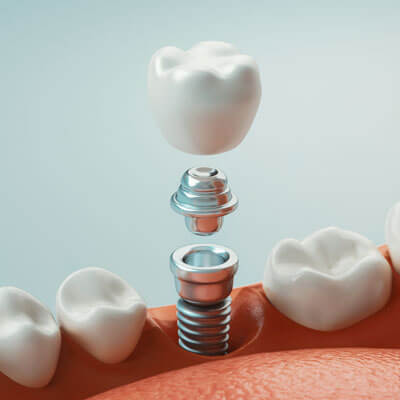Dental Implants in Brooklyn
 According to medical statistics, only 20% of people worldwide can say they have completely healthy teeth. Many go to the dentist when it’s too late to treat the diseased tooth; removal is the only option.
According to medical statistics, only 20% of people worldwide can say they have completely healthy teeth. Many go to the dentist when it’s too late to treat the diseased tooth; removal is the only option.
The embarrassment and irritation from tooth loss can significantly affect our appearance and confidence when facing the world. Dental implants are an excellent choice for those who are tired of bulky dentures and are looking for a better solution. They’re the most natural-looking option, and unlike dentures, you don’t remove them for cleaning, and you can still eat the foods you love.
Filling in the Gaps
Implants are fixed appliances screwed into the jawbone to replace missing teeth. Their titanium roots provide a solid foundation for the replacement tooth. The planning process begins with diagnostic tests and a complete medical history to confirm you are a suitable candidate for the procedure.
The procedure starts with making sure you’re comfortable and pain-free. After being surgically implanted into the jaw, the implant takes root and fuses with the bone as it heals, and a temporary crown is placed on top. This first step may take between three to six months as the healing rate will vary with each person. Once healed, a permanent crown is placed to complete the restoration.
Restore Your Smile Starting Today
Call Aesthetic Dental today to schedule a preliminary screening to see if a dental implant is right for you. Contact us at (718) 389-4266.
CONTACT US
Frequently Asked Questions
Is it painful to install implants?
Is there a difference in placing implants in the upper vs. the lower jaw?
The upper jaw is more porous, often requiring bone grafting to build up atrophied bone. The bone tissue of the upper jaw is adjacent to the maxillary sinuses, requiring extra care on our dentist’s part.
At what age can implants be placed?
Is it possible to do an MRI after implantation?

